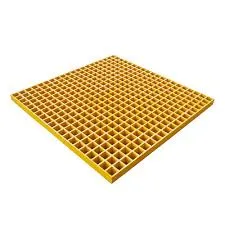
-
 Afrikaans
Afrikaans -
 Albanian
Albanian -
 Amharic
Amharic -
 Arabic
Arabic -
 Armenian
Armenian -
 Azerbaijani
Azerbaijani -
 Basque
Basque -
 Belarusian
Belarusian -
 Bengali
Bengali -
 Bosnian
Bosnian -
 Bulgarian
Bulgarian -
 Catalan
Catalan -
 Cebuano
Cebuano -
 China
China -
 China (Taiwan)
China (Taiwan) -
 Corsican
Corsican -
 Croatian
Croatian -
 Czech
Czech -
 Danish
Danish -
 Dutch
Dutch -
 English
English -
 Esperanto
Esperanto -
 Estonian
Estonian -
 Finnish
Finnish -
 French
French -
 Frisian
Frisian -
 Galician
Galician -
 Georgian
Georgian -
 German
German -
 Greek
Greek -
 Gujarati
Gujarati -
 Haitian Creole
Haitian Creole -
 hausa
hausa -
 hawaiian
hawaiian -
 Hebrew
Hebrew -
 Hindi
Hindi -
 Miao
Miao -
 Hungarian
Hungarian -
 Icelandic
Icelandic -
 igbo
igbo -
 Indonesian
Indonesian -
 irish
irish -
 Italian
Italian -
 Japanese
Japanese -
 Javanese
Javanese -
 Kannada
Kannada -
 kazakh
kazakh -
 Khmer
Khmer -
 Rwandese
Rwandese -
 Korean
Korean -
 Kurdish
Kurdish -
 Kyrgyz
Kyrgyz -
 Lao
Lao -
 Latin
Latin -
 Latvian
Latvian -
 Lithuanian
Lithuanian -
 Luxembourgish
Luxembourgish -
 Macedonian
Macedonian -
 Malgashi
Malgashi -
 Malay
Malay -
 Malayalam
Malayalam -
 Maltese
Maltese -
 Maori
Maori -
 Marathi
Marathi -
 Mongolian
Mongolian -
 Myanmar
Myanmar -
 Nepali
Nepali -
 Norwegian
Norwegian -
 Norwegian
Norwegian -
 Occitan
Occitan -
 Pashto
Pashto -
 Persian
Persian -
 Polish
Polish -
 Portuguese
Portuguese -
 Punjabi
Punjabi -
 Romanian
Romanian -
 Russian
Russian -
 Samoan
Samoan -
 Scottish Gaelic
Scottish Gaelic -
 Serbian
Serbian -
 Sesotho
Sesotho -
 Shona
Shona -
 Sindhi
Sindhi -
 Sinhala
Sinhala -
 Slovak
Slovak -
 Slovenian
Slovenian -
 Somali
Somali -
 Spanish
Spanish -
 Sundanese
Sundanese -
 Swahili
Swahili -
 Swedish
Swedish -
 Tagalog
Tagalog -
 Tajik
Tajik -
 Tamil
Tamil -
 Tatar
Tatar -
 Telugu
Telugu -
 Thai
Thai -
 Turkish
Turkish -
 Turkmen
Turkmen -
 Ukrainian
Ukrainian -
 Urdu
Urdu -
 Uighur
Uighur -
 Uzbek
Uzbek -
 Vietnamese
Vietnamese -
 Welsh
Welsh -
 Bantu
Bantu -
 Yiddish
Yiddish -
 Yoruba
Yoruba -
 Zulu
Zulu
Innovations in Fiber Reinforced Plastic Piping Systems for Enhanced Performance and Durability
Understanding FRP Piping Systems A Comprehensive Overview
Fiber Reinforced Plastic (FRP) piping systems have gained significant traction in various industries due to their unique properties and benefits. Composed of a polymer matrix reinforced with fibers, FRP offers an excellent compromise between strength and weight, making it a favorable choice in sectors such as chemical processing, wastewater management, and oil and gas.
Advantages of FRP Piping Systems
One of the primary advantages of FRP piping systems is their high corrosion resistance. Traditional metallic pipes often succumb to rust and corrosion when exposed to aggressive chemicals or moisture. In contrast, FRP pipes do not corrode, providing longevity and reducing maintenance costs significantly. This resistance extends the lifespan of the piping system, thereby reducing the frequency of replacements and repairs in industrial applications.
Moreover, FRP pipes are lightweight compared to their metal counterparts. This characteristic not only facilitates easier transportation and installation but also lowers the overall structural load on supporting structures. Reduced weight can lead to savings on scaffolding and support systems, making FRP an economically viable solution when project costs are a consideration.
Another notable advantage is the thermal insulation properties of FRP materials. These piping systems exhibit lower thermal conductivity than metal pipes, helping to maintain the temperature of the fluids being transported. This quality is particularly advantageous in applications where temperature control is critical, such as in the transport of hot chemicals or in HVAC systems.
Applications of FRP Piping Systems
FRP piping systems are versatile and can be employed in various applications. In the chemical processing industry, they are ideal for transporting aggressive chemicals due to their corrosion resistance. Similarly, in wastewater treatment facilities, FRP pipes are employed for their resistance to the harsh conditions often present in such environments.
frp piping system

The oil and gas industry has also embraced FRP piping systems. They are used for transporting produced fluids and are particularly attractive in offshore applications where weight savings are paramount. Additionally, their non-conductive properties make them a safe choice in environments where electrical insulation is necessary.
Installation and Maintenance
The installation of FRP piping systems requires specialized knowledge due to the specific techniques involved in handling the material. It is crucial that personnel are trained to ensure proper assembly and installation. Joints and fittings must be correctly secured to prevent leaks and maintain the integrity of the system.
In terms of maintenance, FRP systems are generally low-maintenance due to their resistance to corrosion and chemical attack. However, periodic inspections are recommended to ensure that any potential damage or stress is identified early. While the upkeep is not as intensive as that of metallic pipes, maintaining a schedule helps in ensuring the longevity of the system.
Future of FRP Piping Systems
With ongoing advancements in materials science and engineering, the future of FRP piping systems looks promising. New formulations and improved manufacturing techniques are continuously being developed, which can enhance the mechanical properties and expand the range of applications. As industries strive for more sustainable and efficient solutions, the demand for lightweight, corrosion-resistant materials is expected to rise.
In conclusion, FRP piping systems represent a revolutionary shift in the way fluids are transported in various industries. Their combined benefits of corrosion resistance, lightweight nature, and thermal insulation make them a superior choice for numerous applications. As innovations continue to emerge, FRP technology will likely play an increasingly significant role in future piping solutions, paving the way for safer, more efficient industrial practices.









